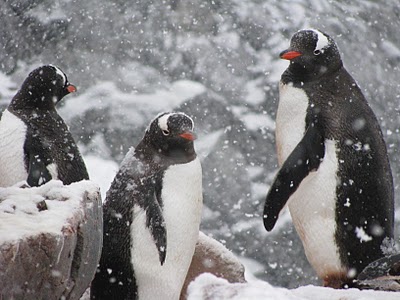The first Census of Marine Life has concluded a decade of investigation into the whos, how manys, and wherefores of the denizens of the World Ocean and released their findings today.
 (NASA image by Robert Simmon and Marit Jentoft-Nilsen, based on MODIS data.)
(NASA image by Robert Simmon and Marit Jentoft-Nilsen, based on MODIS data.)

(Photo Mila Zinkova, courtesy Wikimedia Commons)
While there’s debate over the costs of the enterprise ($650 million, $75 million of which came from the Sloan Foundation), I say: Money well spent.
 (Photo © Julia Whitty)
(Photo © Julia Whitty)
The historic enterprise will almost certainly be followed by similar investigative decades in years to come, à la the International Polar Year. Science follows the footprints of past scientists, orienteering along maps of prior research, recalibrating the compass to current understanding.

The census includes the investigations of 2,700 researchers from 83 nations sailing aboard 540 expeditions to the farthest- and deepest-flung regions of our world.

(Venus flytrap anemone. Photo Ian MacDonald, Florida State University, Census of Marine Life.)
The results have appeared in 2,600 scientific publications. Most of those are open access online. Here’s the bibliographic database.

(Larval tube anemone. Photograph courtesy Cheryl Clarke-Hopcroft/UAF/CMarZ, Census of Marine Life.)
The data are now available to everyone in more than 30 million records listed online in the Ocean Biogeographic Information System database. This database greatly contributes to a 21st-century trend of data sharing. A new scientific revolution.
Among the highlights of the census:
- More than 1 million species likely inhabit our oceans, less than a quarter described by science and that’s not counting microbes, which potentially number in the hundreds of millions.
- 6,000 possible new marine species were added to the catalogue of life on Earth
- Formal scientific descriptions were made of more than 1,200 new species
- 35,000 species were barcoded (genetically analyzed), an efforts that’s redrawn our understanding of the tree of life
- Extremophile life turns out to be normal in marine habitats
- Rare species turn out to be common in marine habitats
- Even after a decade of intensive effort, for more than 20 percent of the ocean’s volume, the census database has no records whatsoever

(Copepod. Photo Uwe Kils, courtesy Wikimedia Commons.)

(Acantharian. Photo Linda Amaral Zettler. Census of Marine Life.)

(Squidworm. Photo Laurence Madin, Woods Hole Oceanographic Institution, Census of Marine Life.)
The pdf of the highlights report:
First Census of Marine Life 2010: Highlights of a Decade of Discovery

Reposted from my blog Deep Blue Home.












